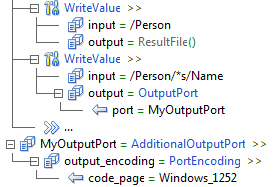B2B Data Transformation
- B2B Data Transformation 10.4.0
- All Products

<Person gender="M"> <Name> <First>Ron</First> <Last>Lehrer</Last> </Name> <Id>547329876</Id> <Age>27</Age> </Person>

<Person gender="M"> <Name> <First>Ron</First> <Last>Lehrer</Last> </Name> <Id>547329876</Id> <Age>27</Age> </Person>
<Name> <First>Ron</First> <Last>Lehrer</Last> </Name>